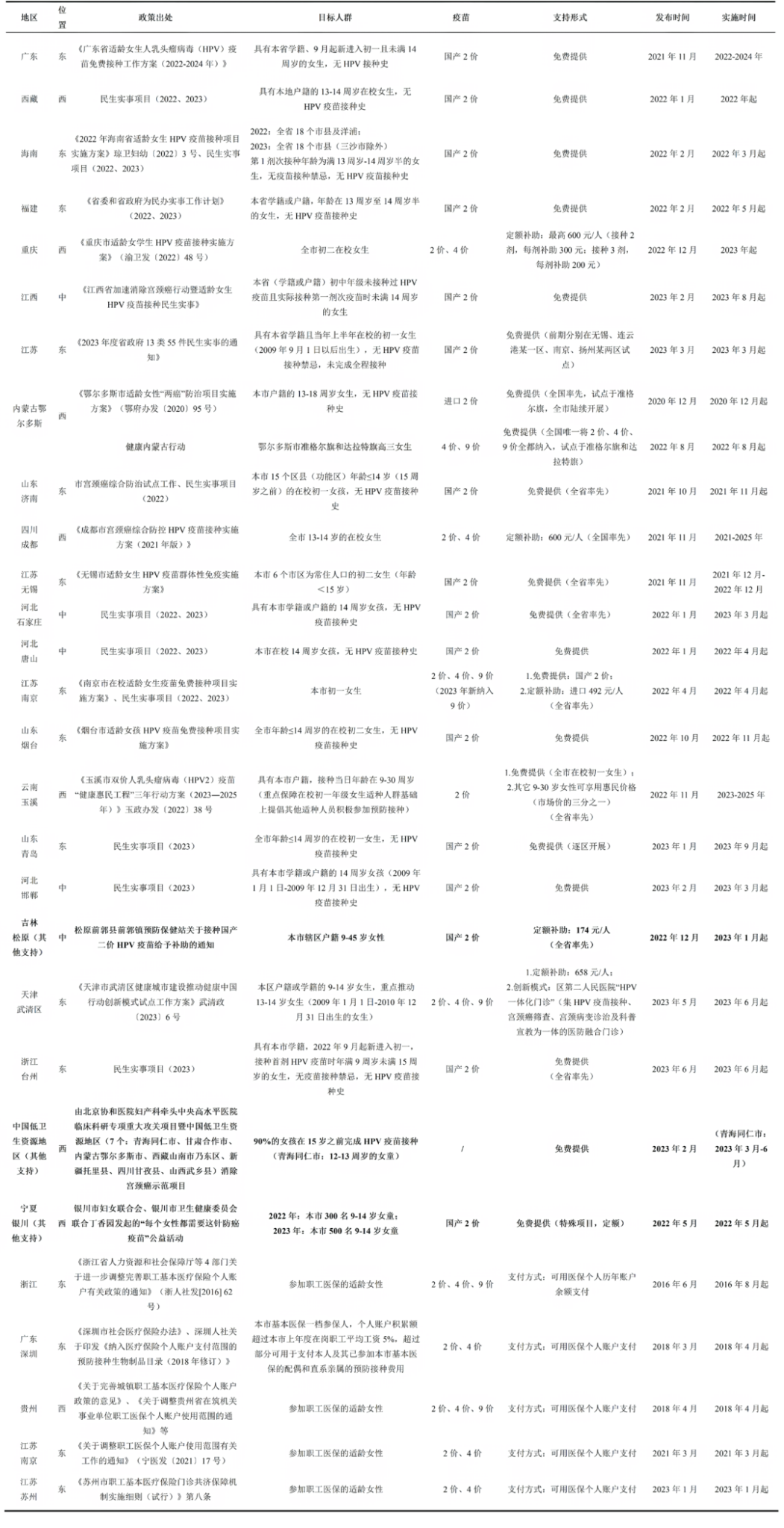Journal Content Recommendation
01
Real-world data of China: Analysis of HPV vaccine coverage and post-vaccination adverse reaction monitoring in Western Chinese provinces from 2018 to 2021
The first-dose HPV vaccine coverage rate among females aged 9 to 45 was 2.02%, with the lowest rate of less than 1% observed in females aged 9 to 14. The HPV vaccine coverage rate among females aged 9 to 14 in Gansu Province is remarkably low, and there is an urgent need to enhance vaccine coverage. From 2018 to 2021, the incidence of adverse reaction following HPV immunization HPV within the expected range, indicating the vaccine’s safety profile.
https://doi.org/10.1080/21645515.2024.2315653
02
Thoughts and suggestions on digital services to enhance the level of vaccination management
This study suggests establishing a departmental coordination mechanism for data interconnection and sharing, formulating data standards and functional specifications, enhancing the functionalities of the immunization planning information system, strengthening data collection and analytical usage, and intensifying appointment management and science and health education to provide expert guidance for the construction of digital vaccination services across the country in the future.
https://doi.org/10.3760/cma.j.cn112150-20231012-00262
03
U.S. COVID-19 vaccine distribution strategies, systems, performance, and lessons learned, December 2020 – May 2023
During December 2020 through May 2023, the Centers for Disease Control and Prevention’s (CDC) Immunization Services Division supported and executed the largest vaccine distribution effort in U.S. history, delivering nearly one billion doses of COVID-19 vaccine to vaccine providers in all 50 states. This article describes the infrastructure supporting the distribution of U.S. government-purchased COVID-19 vaccines that was in place pre-pandemic, and the infrastructure, processes, and communications efforts developed to support the heightened demands of the COVID-19 vaccination program, and describes lessons learned.
https://doi.org/10.1016/j.vaccine.2024.02.020
04
Health system quality and COVID-19 vaccination: a cross-sectional analysis in 14 countries
Vaccination coverage with at least two or three doses ranged from 29% in India to 85% in Peru. Greater health-care use, having a regular and high-quality provider, and receiving other preventive health services were positively associated with vaccination. Confidence in the health system and government also increased the odds of vaccination. By contrast, having unmet health-care needs or experiencing discrimination or a medical mistake decreased the odds of vaccination. Building strong primary care systems and ensuring a baseline level of quality that is affordable for all should be central to pandemic preparedness strategies.
https://doi.org/10.1016/s2214-109x(23)00490-4
05
Adverse Event Following Immunization Monitoring System in Japan
This article summarizes the monitoring system of AEFI and the unique compensation system (so-called relief system) in Japan. In addition, current problems and issues on the AEFI monitoring and relief system will be specified, and immunization-related systems planned to be built in the future in Japan will be introduced.
https://doi.org/10.1097/inf.0000000000004184
06
Integrating COVID-19 Vaccination in Primary Care Service Delivery: Insights From Implementation Research in the Philippines
A participatory implementation research study was conducted in the Province of Iloilo, Philippines to integrate selected public health interventions into the implementation of the primary care benefit package funded by public health insurance. The intervention showed substantial improvement across the 5 dimensions of the RE-AIM framework, including enhanced access to health care services, as indicated by improvements in primary care patient registration, family planning services, and COVID-19 vaccination processes, as well as an increase in registrations and first patient encounters.
https://doi.org/10.9745/ghsp-d-23-00202
07
A cross-sectional assessment of the effects of select training modalities on vaccine cold chain management
This study attempted to measure the effect of training on vaccine cold chain handler knowledge and practices. Vaccine cold chain management among the study group had an average score of 65.33% range (31-85%), below the target of 80% set by the Effective Vaccine Management. The average knowledge score among the study respondents was 62.42% with a range (45-95%). The knowledge of respondents generally increases with an additional increase in the number of training modalities.
https://doi.org/10.1080/20523211.2023.2292717
08
Strengthening Immunisation Services in India through Digital Transformation from Co-WIN to U-WIN: A Review
In India, the immunization programme has made a few technology-dependent advancements. Co-WIN serves as the digital backbone for India’s COVID-19 vaccination programme, facilitates the registration and scheduling of vaccine appointments, tracking of vaccination coverage, monitoring adverse events, enabling a swift and organized response to the pandemic. The U-WIN (universal immunization) is a comprehensive digital system aligned with the Ayushman Bharat Digital Mission. Digital initiatives represent a significant leap in India’s immunisation efforts.
Two Session Special
09
A CPPCC member suggested improving review and approval mechanisms to promote domestic combination vaccine development
During the Two Sessions, Zhu Tao, Chinese People’s Political Consultative Conference (CPPCC) member and Chief Scientific Officer of CanSino Biologics, submitted several proposals regarding the vaccine industry. He pointed out that current regulatory standards pose significant challenges to the breakthrough R&D for combination vaccines, resulting in long development cycles, high risks, and substantial investments, which hinder innovation. Zhu also called for the rapid implementation of detailed regulations for the national compensation mechanism for AEFI, aiming to standardize compensation and the procedures. (Source: The Paper)
10
One NPC representative proposed offering free flu vaccinations to children in daycare and primary & secondary school students
Wan Li, National People’s Congress (NPC) representative and Vice President of the All China Lawyers Association, suggested offering free flu vaccinations to priority populations to increase flu vaccine coverage. China used the trivalent inactivated flu vaccines, the quadrivalent inactivated flu vaccines, and the trivalent live-attenuated flu vaccines, all suitable for children aged 3 and above. Wan also recommended enhancing policy support for vaccine manufacturers to gradually reduce the costs of flu vaccine research, production, and distribution. (Source: Southern Metropolis Daily)
Content Editor: Tianyi Deng
Page Editor: Jiaqi Zu/Ziqi Liu





